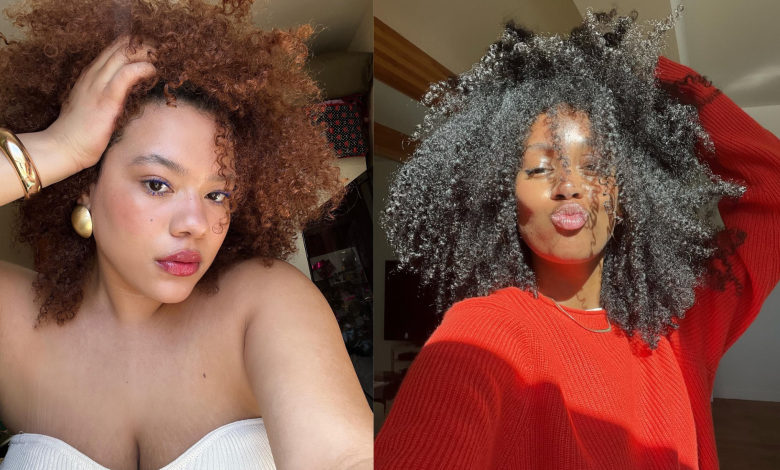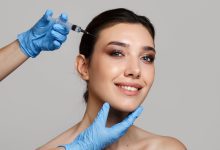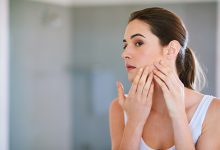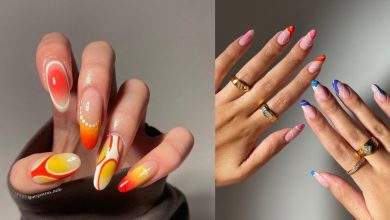How to Dye Curly Hair Safely, According to Hairstylists

As someone who has curly hair, I know that giving my strands extra TLC isn’t a once-in-a-while kind of thing—it’s a regular part of my routine, as it is for so many others. As curl specialist and hairstylist Robert Evan Thomas points out, extra hydration and moisture are key because oil gets trapped on the scalp due to the curvature of the curl that doesn’t allow it to travel down naturally the way it does with straight hair. This can make the idea of switching up your look using hair dyes a bit daunting.
I remember growing up being told to never put color on my hair because it would damage it. But according to Thomas, it’s not always the dye itself that can cause damage; it’s the way it’s done. “When coloring hair at home or even in the salon, what most people equate to damage is generally caused by overlapping instead of doing touch-ups over new growth, which creates a continual cycle of drying the hair out.”
To be clear, that doesn’t mean that you don’t have to worry about overprocessing your hair. It just means that with a proper routine, damaged hair post-coloring is avoidable. Ahead, learn everything there is to know about how to color your hair safely, according to top curly hair specialists.
What to Do Before Dyeing Your Hair
Always book a consultation.
A consultation is going to be helpful for both you and your stylist for multiple reasons. For starters, it gives your stylists the chance to get to know your hair texture, porosity, and health before creating a color plan, says texture specialist and Schwarzkopf Professional digital artistic team ambassador Brendnetta Ashley. “It’s key to work with a colorist who truly understands textured hair, so they can create a look that not only brings your vision to life but keeps your curls healthy and thriving,” she says.
Thomas agrees, noting that from a client perspective, scheduling a consult gives you an opportunity to ask questions and address any concerns. “The focus of color with curly hair created an anxiety, but now you have curl experts who have long-standing histories in knowing what it takes to manage curly hair,” he says.
Invest in hair dye that meets your needs.
In general, going lighter may require you or your stylist to strip your natural hair more to get the pigment you want into the hair. However, Ashley notes that curls tend to respond better to gentler options and suggests semi-permanent or demi-permanent dyes since they sit on the surface of the hair rather than penetrating deep into the cuticle. “One of my go-to formulas is Igora Vibrance—it gives beautiful shine and rich tone without the heavy commitment or harsh effects,” she says. “It’s a much healthier way to play with color, especially if you want to keep your curls strong and vibrant.”
If you’re doing your hair at a salon, speak with your stylist about what options are available and discuss the possibility of bringing in your own choice of dye to have them apply to your hair.
Prep your hair with a mask.
When it comes to coloring curly hair, prep starts way before the day you’re actually doing it. “I always recommend doing a deep-conditioning or protein treatment about a week before your appointment to strengthen and hydrate the hair,” says Ashley. “It helps your curls better withstand the chemical process.”
Thomas adds that depending on your curl type and texture, you may want to do a moisturizing mask before and after coloring your hair. If you do decide to do a protein treatment, he recommends following it up with a conditioner to prevent brittleness and restore your hair’s pH.
How to Dye Your Hair Safely
Apply with care and caution.
Dyeing your hair at home means you’ll have to pay close attention to your approach, depending on whether or not you’re doing full color or just roots. But before you jump in, Ashley suggests starting with a patch test to rule out the possibility of an allergic reaction. You should also protect your hairline with barrier cream and wear gloves.
If you’re doing full color, make sure you’re working in sections and applying the color to dry, detangled hair—keeping it on for the appropriate amount of time. “I always follow the recommended processing times closely to get rich, even color without risking overprocessing,” says Ashley. “Great results really come down to the right product and the right application.” For root touch-ups, Thomas warns against extending the color down the whole hair shaft to avoid dryness.
Build up color in multiple sessions.
Whether you’re going to a salon or you’re used to dyeing your own hair, the last thing you want to do is put your hair through too much in one sitting, especially if you’re planning on making a big change. “For major color changes, I always recommend taking a multi-session approach,” says Ashley. “Spacing it out not only protects the integrity of your curls but also leads to better, more beautiful results in the long run.”
She adds that if you’re going lighter, doing too much in one session can compromise hair health and even weaken your curl pattern. Keeping curls healthy throughout the process will also make the color appear better as well, so patience is key.
What to Do After Dyeing Your Hair
Condition your hair often and mask up.
Once you’ve colored your hair, prioritize creating a routine that promotes hair health. “I always recommend using a sulfate-free shampoo that’s color-safe and a rich, hydrating conditioner to keep both your color and your curls looking their best,” says Ashley.
You should also increase how often you condition and deep-condition your hair. “Incorporating a deep-conditioning treatment once a week can help restore moisture and elasticity,” she says. “And don’t forget to minimize heat styling when you can—air-drying or using a diffuser on a low setting helps protect your curl pattern and keep it bouncy.”
What to Look For in Dyes for Curly Hair
If you’re buying your own hair dye, take a close look at the ingredients before fully committing to the product. Ashley often tells her clients to steer clear of harsh ingredients like ammonia, sulfates, parabens, and heavy alcohols, which can dry out curly hair. Instead, you can reach for low-ammonia or ammonia-free options. Alternatively, many brands now offer dyes that contain nourishing ingredients like oil for more shine, vitamins to strengthen hair, or aloe vera for boosting moisture.
What Is More Damaging, Highlights or Color?
When done by a professional, highlights can actually be less damaging on curly hair because you’re only coloring certain pieces rather than the whole head. Ashley prefers using an open-air method where she fully saturates certain strands in color for an even lift that doesn’t damage the curl pattern. However, other stylists may opt for different techniques.
Explore More:
Source: WhoWhatWear
HiCelebNews online magazine publishes interesting content every day in the Style section of the Fashion & Beauty category. Follow us to read the latest news.
Related Posts
- Beyond the Beach: 8 Elevated Ways Women in London and NYC Are Wearing Flip-Flops
- 5 body parts where you should NOT get a tattoo
- I Test Beauty Products Every Single Day—These Are the Only Ones Worth Buying at Amazon’s Beauty Sale
- Beauty Editors and Celebrity MUAs Swear These 15 Lip Glosses Are the Only Ones Worth Buying RN
- Darling, Delicate, and Expensive-Looking—These “Rich Grandma” Beauty Staples Double as Heirlooms





